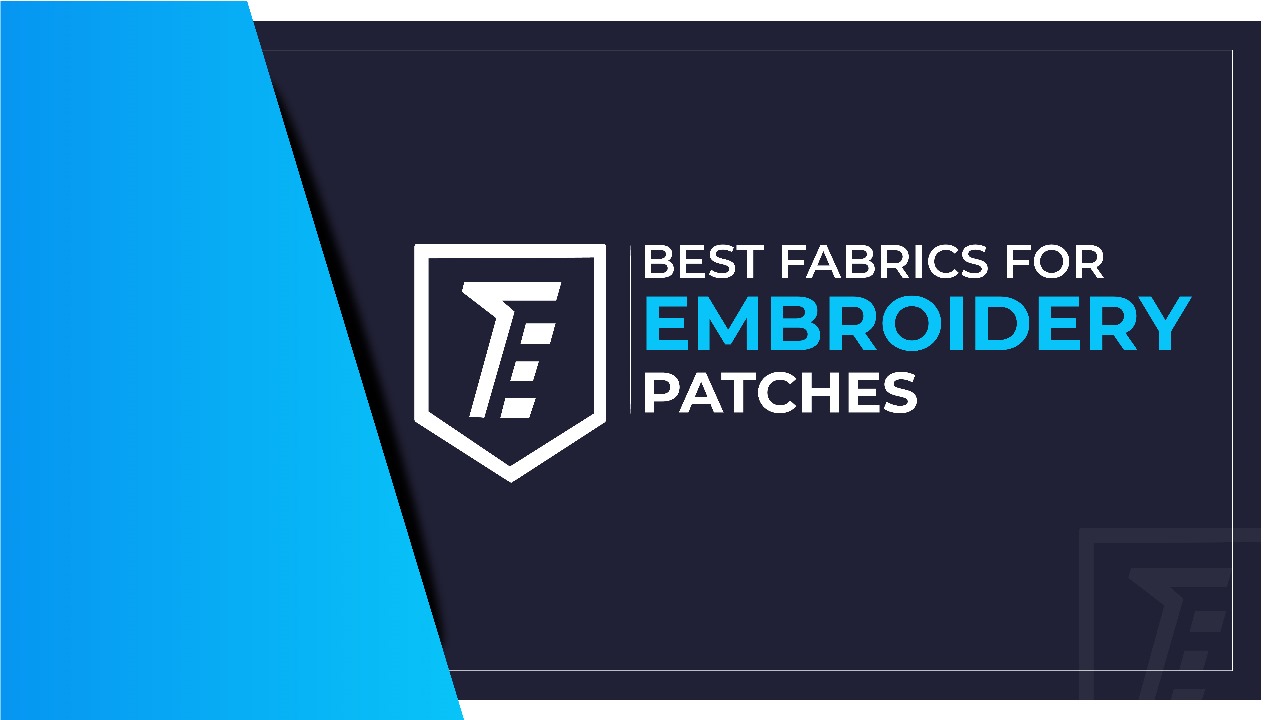

The patch fabric for embroidery designs is the basic element for beautiful artwork. Yet, all fabrics are not suitable to create every delicate embroidery design. Choosing the wrong fabric can lead to crinkled and weak designs or may destroy your final look. So, choosing fabric is very important for amazing embroidery patchwork.
Each fabric has unique characteristics that can influence the digitizing settings. Thus, you must ensure these fabrics are suitable for eye-catching and strong patchwork. So, if you are still confused about which fabric is best for patch embroidery, we are here to help you. We have explored and tested various fabrics that are best for Embroidery Patches. We have created a list of 7 best fabrics for patch embroidery. Each of these fabrics has high durability and a simple application process. So, let’s have a look.
Read More: How to change jpg to DST Embroidery format
The fabric for patch embroidery must go far beyond mere aesthetics. Cotton canvas is one of those fabrics that stands as a robust and versatile option for patch embroidery. It is a lightweight and breathable material. Still, it’s long-lasting for both light and heavy designs. Moreover, its stable base allows various embroidery techniques without over-stretching the material.
Yet, the denseness of cotton canvas material can impact the embroidery process. It shrinks when exposed to water and changes the design quality and neatness. Hence, the digitized designs for embroidery machines must adjust stitch density and length. It’s necessary to maintain fabric integrity. It should ensure that the design doesn’t cause excessive stress on the threads or fabric. Hence, it’s a perfect fabric for patch embroidery, but it may not work for all designs.
Denim is a classic choice for young fashion enthusiasts these days. It is known for its thickness and durability and is a favorite choice for patch embroidery. The strong fabric knitting patches remain attached, allowing machine-sewn and hand-stitch patches. The diagonal texture also adds visual interest to the embroidery design. Besides, its sharp shades prevent color bleeding. Patches can be washed and cared for on denim garments. It popularized denim, providing a reliable canvas for creative and personalized patch embroidery.
Felt fabric has an absolute soft feel. Many embroiderers prefer Felt fabric patches due to their resistance to stretching. It allows customers to worry less about loose stitching and extensive finishing needs.
Felt patches are both elegant and simple. You can customize them with different colors. Embroidered felt patches have a classic look, and you can choose from various colors to make them more appealing. Felt fabric is ideal for embellishing bags, jackets back digitizing, or creating costume patches. Its ease of use extends to those without embroidery skills, as basic sewing suffices for secure attachment.
Read More: Best Embroidery Machines For Custom Designs
As a patch design lover, you might know the struggle of fabric not properly holding the thread. That’s where Twill fabric comes into play. It can keep embroidery stitches in place really well, which means your patches will last a long time. Plus, the diagonal texture of twill makes the patches look even cooler, adding a nice touch to their style! This weave adds visual interest and enhances the fabric’s strength. Twill fabric is good for patches in many ways, but there’s one thing to watch out for. Its diagonal lines make it a bit tricky to handle detailed designs. Sometimes, these lines can cross with the embroidery stitches, affecting your design’s clarity.
Linen, known for its lightweight and breathable nature, offers a unique texture that lends itself well to artistic patch embroidery. While linen may not be the most durable fabric on this list, its natural elegance makes it suitable for decorative patches and creative projects. In digitizing, the delicate nature of linen influences stitch angles and lengths, ensuring that the design accommodates the fabric’s texture without causing excessive stress. Linen patches are best suited for items that don’t undergo heavy wear and tear.
Read More: How to Convert Image to Vector Illustrator
Polyester is a smart choice for making machine-embroidered patches. It’s easy to work with because it cuts and sews well, making patch-making a breeze. It also feels soft and flexible, making the patches nice to touch. It won’t shrink when you wash it. Thus, embroidering these patches on clothes allows a smooth stitching and ironing process. Overall, polyester makes crafting embroidered patches easy and stylish. Besides, it’s also wash-safe, making it a durable choice for rough use.
Wool’s unique texture and warmth make it perfect for cold-weather garments and accessories. Unlike some fabrics that may stretch or shrink over time, wool maintains its original shape, even after multiple washes. This attribute not only ensures the longevity of the patches but also alleviates the worry of distorted designs. Moreover, wool’s inherent lustrous sheen, graceful drape, and luxurious softness contribute to an overall premium appearance, making it an ideal canvas for embroidery creations that demand comfort and sophistication.
Read More: How To Remove Embroidery
Ultimately, the fabric you pick for your patches is a big part of the creative process. Each fabric impacts embroidery, so you need to think about what you want for your patches. Even fabrics that aren’t super durable can be great for certain projects. When choosing the right fabric, consider your project needs, design goals, and how long you want the patches to last.
Working with an experienced digitizer, someone who knows about embroidery is important when using different fabrics. They know how each fabric works with embroidery threads and can adjust things to make your patches look awesome and last a long time.
So, whether you’re making patches for fashion, function, or decoration, remember that the fabric you choose is a big deal. It’s the first step in making your embroidery project a success.
Read More: Difference Between Hand Embroidery and Computerized Embroidery